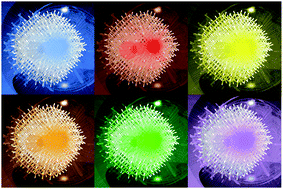Unsupervised structure classes vs. supervised property classes of silicon quantum dots using neural networks†
Abstract
Machine learning classification is a useful technique to predict structure/property relationships in samples of nanomaterials where distributions of sizes and mixtures of shapes are persistent. The separation of classes, however, can either be supervised based on domain knowledge (human intelligence), or based entirely on unsupervised machine learning (artificial intelligence). This raises the questions as to which approach is more reliable, and how they compare? In this study we combine an ensemble data set of electronic structure simulations of the size, shape and peak wavelength for the optical emission of hydrogen passivated silicon quantum dots with artificial neural networks to explore the utility of different types of classes. By comparing the domain-driven and data-driven approaches we find there is a disconnect between what we see (optical emission) and assume (that a particular color band represents a special class), and what the data supports. Contrary to expectation, controlling a limited set of structural characteristics is not specific enough to classify a quantum dot based on color, even though it is experimentally intuitive.

- This article is part of the themed collections: Celebrating International Women’s Day: Women in Nanoscience and Horizons Community Board Collection: Optical and Photonic Materials


 Please wait while we load your content...
Please wait while we load your content...